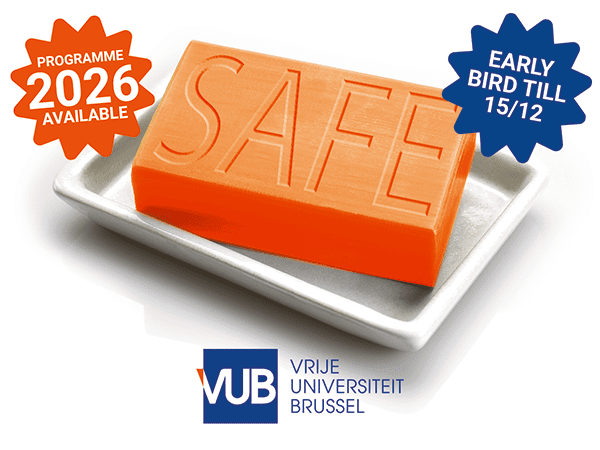Objectives of the Safety Assessment of Cosmetics in the EU
Safety of Cosmetics is a key issue in the EU
Cosmetics in the EU are regulated by Regulation (EC) N° 1223/2009, requiring that cosmetic products are shown to be safe before reaching the market. This must be done through safety assessment and for that purpose a unique dossier (Product Information File, PIF) need to be composed by a qualified safety assessor for each individual cosmetic coming on the European market. Safety assessment of cosmetic products in Europe is based on the safety assessment of the composing ingredients and is exposure-driven. This scientific exercise is usual performed based on data obtained through animal experimentation. Since 11 March 2013, the testing and marketing bans that were introduced via the 7th Amendment of the former Cosmetic Directive 76/768/EC, fully apply. This means that oral No-observable-Adverse-Effect-Levels (NOAELs), obtained through sub-chronic toxicity studies or developmental toxicity studies, are no longer available. New ways to guarantee the safety of cosmetic products must be explored. Therefore, the topic of Next Generation Risk Assessment (NGRA) of cosmetics has been added to this training course.
Several reasons can be given that urge potential safety assessors of cosmetics to follow this specific academic training in safety evaluation of cosmetics. Reasons include the unadapted traditional lesson packets of diplomas to become a safety assessor as mentioned in the EU Cosmetic Regulation, the difficulties generated by moving from in vivo to animal-free testing, the special needs for small and medium sized enterprises (SMEs) to deal with all aspects of the Regulation, the important tasks of the Responsible Person, the growing awareness of the consumer and the changing role of raw material suppliers for cosmetics. This course not only offers an intensive training programme designed for safety assessors of cosmetics in the EU. It is also open to raw material suppliers, Responsible Persons, SMEs, contract laboratories, inspectors and legislators that want to be well-informed how safety evaluation of cosmetics is done in the EU and what is in the pipeline for the near future.
This course is realized in close collaboration with the international cosmetic industry and teaching is done at a high standard academic level. Particular emphasis is given to key issues in safety evaluation of cosmetics, including the application of animal-free methods and so-called ‘ New Approach Methodologies’ (NAMs), and how to interpret the results in a weight of evidence approach. It is shown how and when animal testing data still can be generated and what the toxicological requirements are at the Commission level for securing the safety of the Annex substances of the Cosmetic Regulation.
At the end of the theoretical course, practical training is included on how to make a PIF according to Annex I of the Cosmetic Regulation. The possibility is given to all participants to pass a written exam (open book exam) during the last day of the course, which, upon success, results in an official training course VUB-certificate (6 ECTS points).
Please note that the number of participants is limited to 70. In view of the high number of participants in the courses organised during the last years, it is highly advisable to complete the online registration form and do the online payment by credit card. Registration will be carried out on a first come first served basis.
Key questions to be tackled by the course
- What are the key points of Regulation EC 1223/2009?
- What rules apply for borderline products?
- What are the current challenges in safety assessment of cosmetics in the EU?
- Which role does risk perception play in our society and how does it affect the cosmetic industry?
- What are animal-free alternative methods? What are NAMs?
- What validated replacement tests do we actually have? How to interpret the results?
- How to integrate in chemico, in silico and in vitro data with historical in vivo data into a PIF?
- What in silico methodology is available that is useful in safety assessment of cosmetics and their ingredients?
- Which role does local toxicity testing play in the safety assessment of cosmetics?
- Which role does systemic toxicity testing play in the safety assessment of cosmetics?
- How to apply NGRA for the assessment of skin sensitization of a cosmetic ingredient?
- How to deal with nanoparticles in cosmetic products?
- How to make a PIF for a finished cosmetic product according to the actual EU Regulation?
- How to make a complete dossier for a cosmetic ingredient to be taken up in the Annexes of the Regulation?
- What are the packaging requirements under Annex I?
- How to practically use the Notes of Guidance of the Scientific Committee on Consumer Safety (SCCS)?
* According to the Cosmetic Regulation EC N° 1223/2009 cosmetics circulating in Europe must demonstrate the evidence of their conformity with the stipulated requirements in the form of a Product Information File (PIF). A PIF is the mandatory compilation of technical documentation with regard to the description, the manufacturing methods, claims substantiation and a Cosmetic Product Safety Report.
